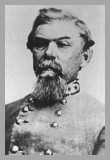
Copyright © Randy Strickland, 1998, 1999, 2000, 2001, 2002, 2003, 2004, 2005, 2006, 2007, 2008, 2009, 2010, 2011
|
|
||||||||||
|
||||||||||

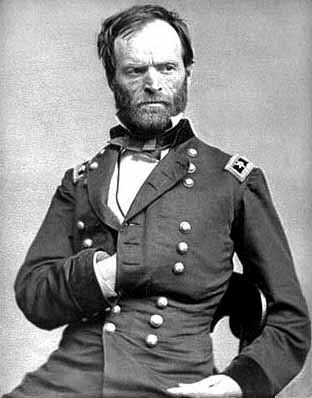
|
This part of my site is dedicated to detailing the scourge and brutality of General William T. Sherman, commanding a combined Union army of 100,000 and receiving orders from General Grant to "move against Johnston's army, to break it up, and to get into the interior of the enemy's country...inflicting all the damage you can." As General Grant put his plan into action and faced General Lee's army in "The Wilderness", General Sherman began his "March to the Sea."
|
|
As was General Grants's orders, General W.T. Sherman's objective in his famous "March to the Sea", was to deprive the struggling Confederacy, as well as it's armies, of the goods and transport that had been supporting the war effort. In these more modern times, the destruction of manufacturing facilities, food stuffs, and products made to support combat troops in the field, are all considered "righteous" targets. The wanton destruction of personal property, civilian communities, hospitals, orphanages, etc.. is considered taboo and leaves one to appear as a war criminal. Had General Sherman stayed the path of his given orders, history would look upon this "March" in an entirely different manner. In the world we now find ourselves, I wonder if William Tecumseh Sherman would not be tried as a war criminal, at least in world opinion if not in the courts.
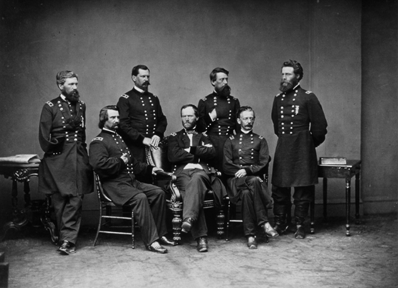 |
|
General Sherman assumed command of his army on 18 March 1864. The army was a combination of General Thomas's Army of the Cumberland; General McPherson's Army of the Tennessee; and General Schofield's Army of the Ohio. This combined army was then quartered in and around Chattanooga, Tennessee. His plans were to move against the Confederate Army of Tennessee, now being commanded by General Joseph Johnston, located in Northern Georgia. The Union army's advantage in numbers were nearly 2 to 1 with just over 100,000 effective troops, while the Confederate army numbered only about 53,000.
|
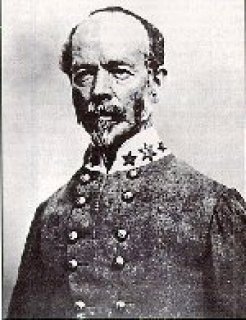
|
Atlanta, Georgia... the city that would quickly become General Sherman's first objective, was nearly 100 miles away. It was a bustling hub of activity, a major transportation, war goods manufacturing, and storehouse of munitions for the entire South. General Johnston's Confederate army's objective while poised in prepared defensive positions, was to prevent the Union army from capturing this major prize.
|
|
By this time in the war, the commanding generals on both sides, had come to realize that the Napoleonic method of open field frontal assaults was both outdated and pure lunacy. General Sherman demonstrated what was referred to as "Indian Fighting", as he preferred not to make direct assaults on prepared defensive positions, but instead would send forces around the enemy position and reak havoc in his rear. He would order the destruction and interdiction of supply lines, and the interruption of lines of communication. It was his hope to draw the Confederate army out into the open and than destroy it in detail. General Joseph Johnston, commanding the Army of Tennessee, was considered to be a defensive specialist. He would be quick to strike against overextended lines or against a carelessly mounted defensive position. General Sherman, having a great superiority in numbers, presented a difficult problem for General Johnston. General Sherman would use his numbers to out maneuver the Confederates. He ordered movements around the perimeter of the city and the destruction of railroads running into the area. The tactic was to prevent the resupply of both the Confederate soldiers and the civilian inhabitants of the city. Eventually, the Confederate army would have to withdraw and the city itself would fall to the Union. In one such attempt to prevent the use of the railroads, General Sherman ordered a cavalry detachment to destroy the line between Macon and Savannah. The cavalry troops not only destroyed locomotives, over 100 cars and track, they also burned the bridge across the Oconee River. While in the area of Macon and having no intention of entering the city, they shelled the city with no regard for the civilian population. General Sherman found that his horsemen did not do enough damage, as the Confederates were able to repair the tracks in short order. He than would send large numbers of infantry to destroy tracks and disrupt traffic in any way possible. These troops would permanently destroy sections by taking up the rails, heating them on large fires and than bending them around trees and other fixed objects. At one point, the Union infantry troops were sent to destroy a section of track near Jonesboro, Ga. They were attacked by defending Confederate troops and suffered a great number of casualties before overpowering the outnumbered Confederate troops. As the Southern soldiers were trying to surrender, the killing continued; the Union soldiers began to club, bayonette and shoot the surrendering Rebel troops. The Union buglers had to sound the cease fire call several times before the masacre finally stopped. General Johnston would skillfully out maneuver General Sherman, continuously falling back to already prepared defensive positions. General Sherman was content to continue this strategy, as the Confederates were falling back towards Atlanta. They fell back from their positions at Dalton, Resaca, Cassville and Allatoona Pass. Finally, there was a large battle that lasted for four days at New Hope Church.
|
|
By the end of June, the Confederate defensive positions were all the way back to Marietta, Ga. Here, while observing the Rebel positions on Pine Mountain, General Sherman noticed a group of Confederate officers standing on an open hilltop. He ordered nearby artillery to bring this hill under fire. He would later learn that this group of Confederate officers were General Johnston and his staff. General Johnston's friend and a valuable Corps commander, Lieutenant General Leonidas Polk was killed in this volley.
| 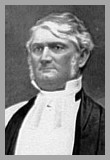
|
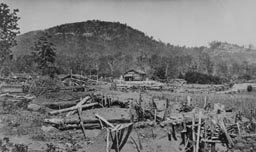
|
The Confederate army than retreated to Kennesaw Mountain, where on 27 June 1864, General Sherman ordered an attack. Here General Sherman was taught the lessons learned by many other commanding officers of this era, well dug in fortified defenders are nearly impervious to fronal assault. The Union attack failed miserably and at a very high cost.
|
|
General Sherman went back to his original strategy and began flanking maneuvers and forced the Confederates to retreat to defensive positions near the Chattahoochee River. They were now only ten miles away from Atlanta. General Sherman sent General McPherson's army on a flanking movement around General Johnston's Confederates, crossing the river unopposed and causing the Rebel army to fall back to the defenses around the city of Atlanta.
| 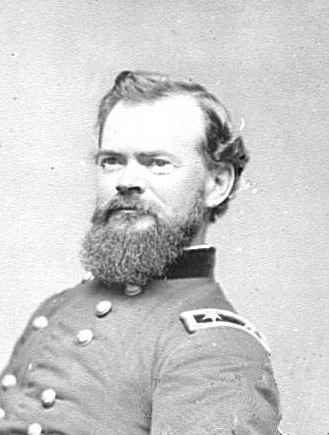
|
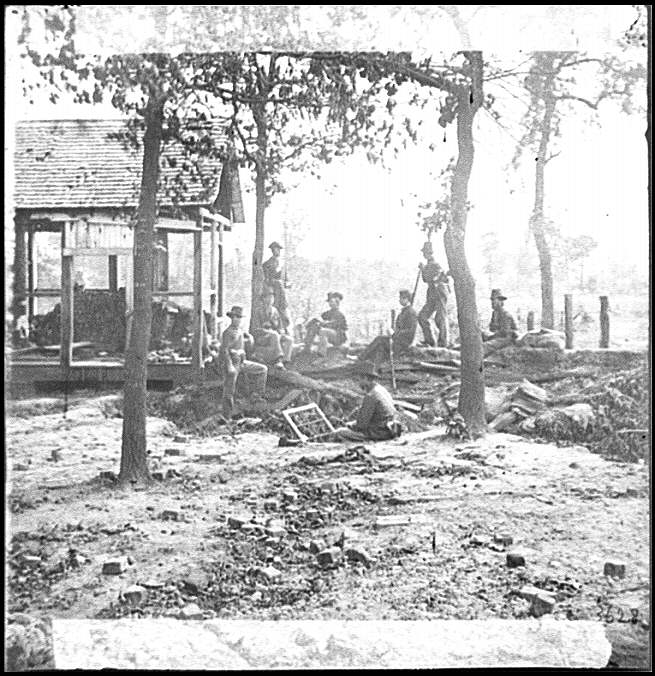
|
On 17 June 1864, Confederate President Davis replaced General Johnston as the commanding officer of the Army of Tennessee, with General John Bell Hood. This was an important move, as General Sherman's staff officers had known General Hood before the war and knew him to be impetuous and a brave fighter. General Sherman, on advice from his staff, braced for an attack. General John B. Hood was well aware that President Davis had put him in command to fight, and he would waste no time in doing so. In crossing the Chattahoochee River, General Sherman's armies were overextended and there was a gap between those of General McPherson and that of General Thomas. On 20 July 1864, General Hood ordered his army to attack General Thomas'.
|
|
General Hood's attack was beaten off by the Union troops and his army suffered heavy losses. However, two days later he attacked again. This time the Union army had rejoined it's forces and the Confederate troops were thrown against General McPherson's army in a flanking movement. This fight was to become known as the Battle of Atlanta. General Hood was very nearly able to succeed in defeating the Union army, in fact General McPherson was killed during this fight. The Confederates had successfully outflanked the Union troops and were hitting them from the front and rear at once. The Union troops, greater in number, rallied and were able to break the assault and General Hood was forced to withdraw to the defensive positions within the city. The past two days of fighting had cost the Confederates over 13,000 men. Troops they could not afford to lose. As General Sherman maneuvered his troops to the right of Atlanta, General Hood came out to fight once more at Ezra Church. Here, the Confederates were once again defeated and again retreated to their positions in Atlanta. Soon General Sherman started an incesasant bombardment of the city.
|
|
After this bombardment of the city and the Confederate lines, General Sherman once again began an encircling movement to the southwest of the city. It was obvious that General Hood's efforts to drive the Union army away from Atlanta would fail and the city would soon fall. On 01 September 1864, General Hood withdrew his army from Atlanta, rather than continue to endure a seige and lose the effective troops he had left. On 02 September 1864, General Sherman's victorious army entered and occupied the city.
| 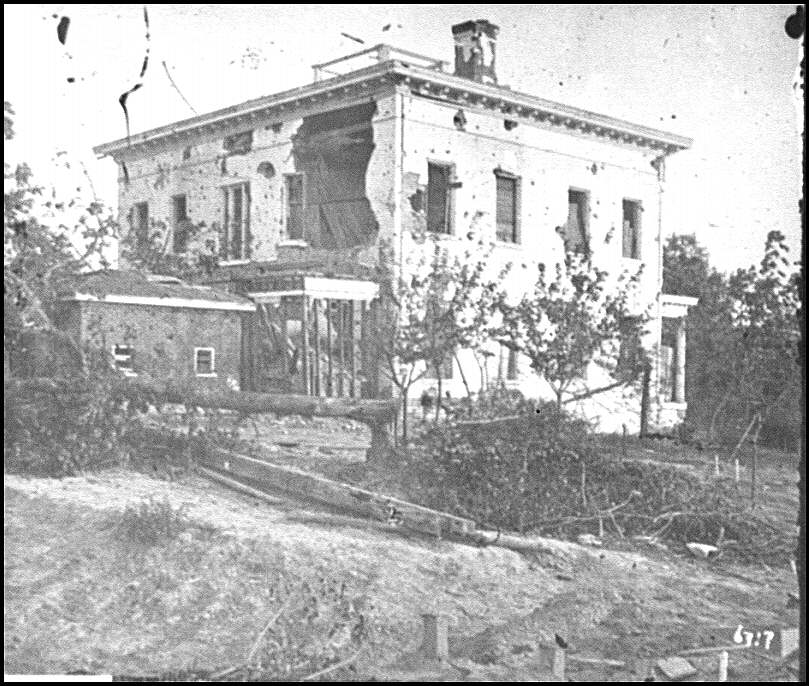
|
|
Although gaining the prize he had sought for months, General Sherman realized that holding Atlanta would be a monumental task. He also realized that it would take a very large number of troops to defend the city and that General Hood could successfully campaign against his army, placing the city under a Confederate seige. The Union supply line was now vulnerable to cavalry attack and a serious threat to General Sherman's army would exist. Adding to this situation were all of the Confederate wounded that were left behind, as well as the civilian population who had chosen to remain in the city. To help alleviate this problem, he ordered that all the residents of the city were to be evacuated. He justified this by explaining that he needed to use the evacuated homes for housing his own men and to store supplies. He was also planning to destroy parts of the city which did not enhance his defensive plans. General Hood had not the stomach for attacking the supply lines of the Union army, nor did he plan to stand and fight those troops sent out by General Sherman to challenge the Confederates. In fact, General Hood retreated further in to Tennessee and Alabama. With this threat to the occupied city gone, General Sherman designed his March to the Sea.
|
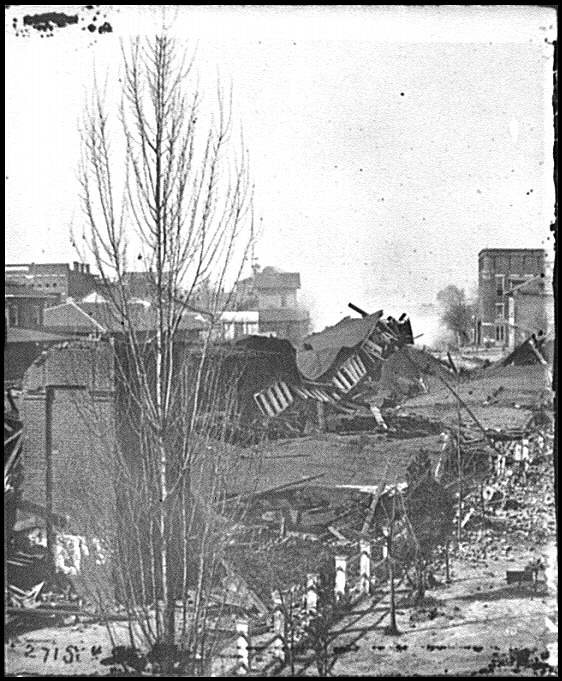
|
As the Union army began to move from Atlanta, General Sherman ordered all buildings, factories, munitions, etc... that could be used by the Confederates, be burned. He made no preparation or specific plans to prevent damage to the surrounding areas of the city. Thus, the city was burned, many civilian houses and buildings were destroyed. Civilian damage greatly outweighing that of military damage. This, as well as the wanton destruction and theivery of personal property constitutes a breach of the law of war.
|
|
General Sherman's responsibility to stop this destruction and abuse of power was and is legally reprehensible. He should have taken all steps to prevent it, stop it once it started and/or punish those who took part in it. The criminal responsibility of General Sherman is obvious and his crimes were against non-combatant civilians, more than they were against an opposing army.
|


